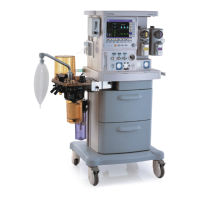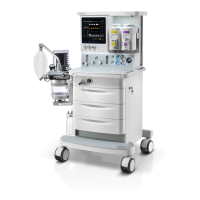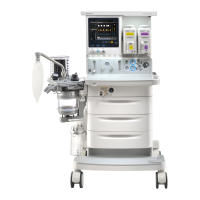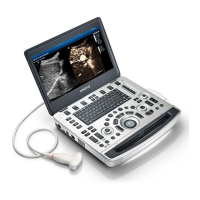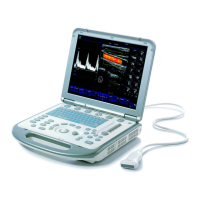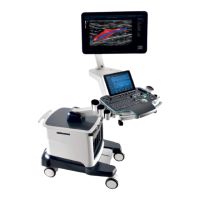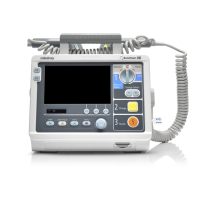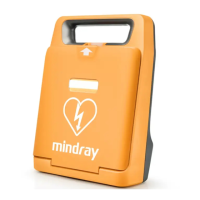7-58
4. Check the airway and make sure that there are no occlusions or leaks.
Vent the sampling tubing to the air and check whether the current rate and set rate
are approximately the same. If the deviation is great, it indicates that there is an
occlusion in the tubing. Check the tubing for an occlusion.
Block the gas inlet of the sampling line. The current rate should drop rapidly and
the message of airway occlusion is prompted. Otherwise, it means that the airway
leaks. Check the airway for leakage.
5. Connect the test system as follows.
6. Open the relief valve and vent a certain standard gas or gas mixture and make sure that
there is an excess gas flow through the T-shape connector to air.
7. In the [O2 Module Cal.] menu, the measured gas concentration and flow are displayed.
If the difference between the measured gas concentration and the actual one is
tolerable, a calibration is not needed.
If the difference is great, a calibration should be performed.
7. Select [Calibrate] to start a calibration.
8. Enter the vented gas concentration and set other gases’ concentration to 0.
9. After a successful calibration, the screen shows [Calibration Completed!]. Otherwise,
the message [Calibration Failure! Please try again.] is displayed. In this case, you
need to do the calibration again
.
7.3.10.3 Commonly-encountered Problems and Recommended Actions
Failure description Possible cause Recommended action
Calibration menu is
inaccessible.
The AG module is not fully warmed up
or not in measure mode.
Wait for the AG module to be
fully warmed up and then
access the calibration menu.
Calibration is not
completed.
1. The module is damaged.
2. The difference between the set O2
calibration concentration and the
selected standard O2 concentration is
too great.
1. Return the module to factory
for repair.
2. The difference between the
standard gas concentration and
the set calibration concentration
cannot exceed 25% of the
standard gas concentration.
AG module
Gas cylinder
Relief valve
Tubing
Open to the air

